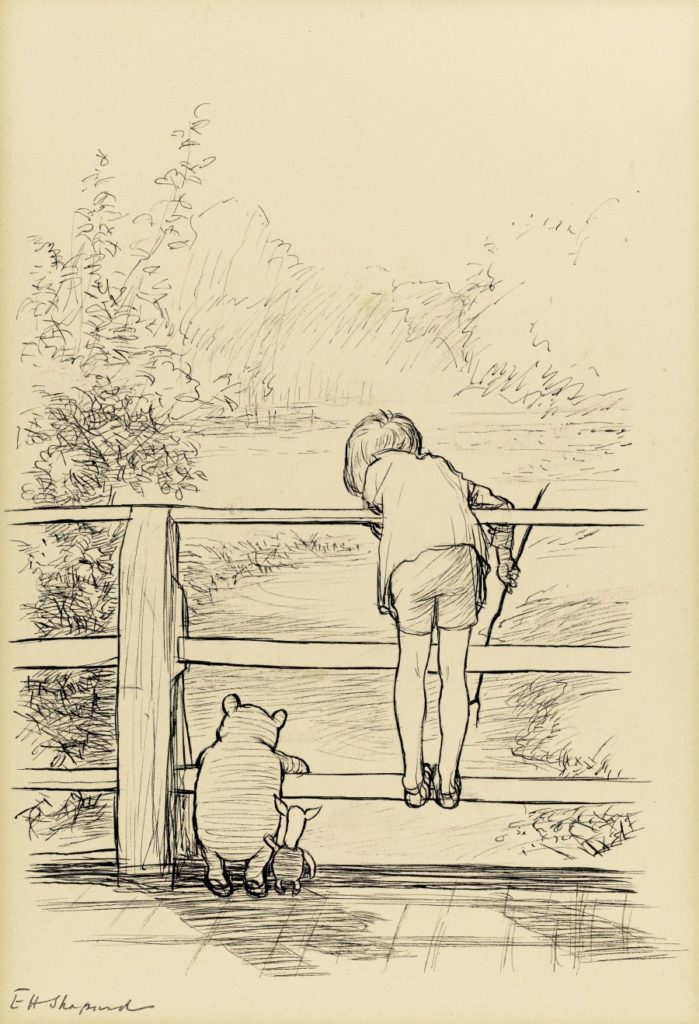… Where Christopher Robin Plays
PC: E. H. Shepard, For a long time they looked at the river beneath them | PC: Sotheby's London
Memento Artem
Deep within a forest in a magical land of imagination a bear goes for a walk.
He soon arrives at a tree and hears a noise. “‘First of all,’ he said to himself: ‘That buzzing-noise means something. You don’t get a buzzing-noise like that, just buzzing and buzzing, without its meaning something. If there’s a buzzing-noise, somebody’s making a buzzing-noise, and the only reason for making a buzzing-noise that I know of is because you’re a bee.’ Then he thought another long time, and said: ‘And the only reason for being a bee that I know of is making honey.’ And then he got up, and said: ‘And the only reason for making honey is so I can eat it.’ So he began to climb the tree.”
This is one of the most iconic scenes in the history of children’s literature. Winnie-the-Pooh, the overly ambitious bear, climbing up a tree only to topple down again.
Scenes like this have a special place in the minds of children who grow up reading and watching Christopher Robin, Pooh and the rest of the gang in the Hundred Acre Wood by the writer, A. A. Milne. However there’s a key player who helped bring these treasured stories to life: E. H. Shepard.
Shepard was originally introduced to Milne through the popular satirical magazine “Punch.” Later, the illustrator and the writer’s working relationship continued into Milne’s new work titled “Winnie-the-Pooh”.
Milne was inspired by his country surroundings of Sussex for the setting and used his son Christopher Robin and Robin’s toy animals as the characters.
Shepard was responsible for the representation of the “Winnie-the-Pooh” that generations have come to know through his illustrations of the original books.
As a child Shepard had a treasured toy wooden horse that he was forced to part with when he moved in with his aunts after his mother died. Through this experience he understood the value of a child’s toy.
That’s why Shepard modeled the look and feel of the character Pooh, after his son’s teddy bear named Growler. For the setting of the Hundred Acre Wood, he followed instructions laid out by Milne.
Shepard traveled to Milne’s country home in Sussex several times to see the place Christopher Robin would play on family weekend getaways.
Between author and illustrator a world of imagination and wonder was created, where a child could feel free to roam and interact with these characters. Or maybe even one where they could learn a lesson or two from a silly old bear.
Cameron Cizek is a senior studying computing.


